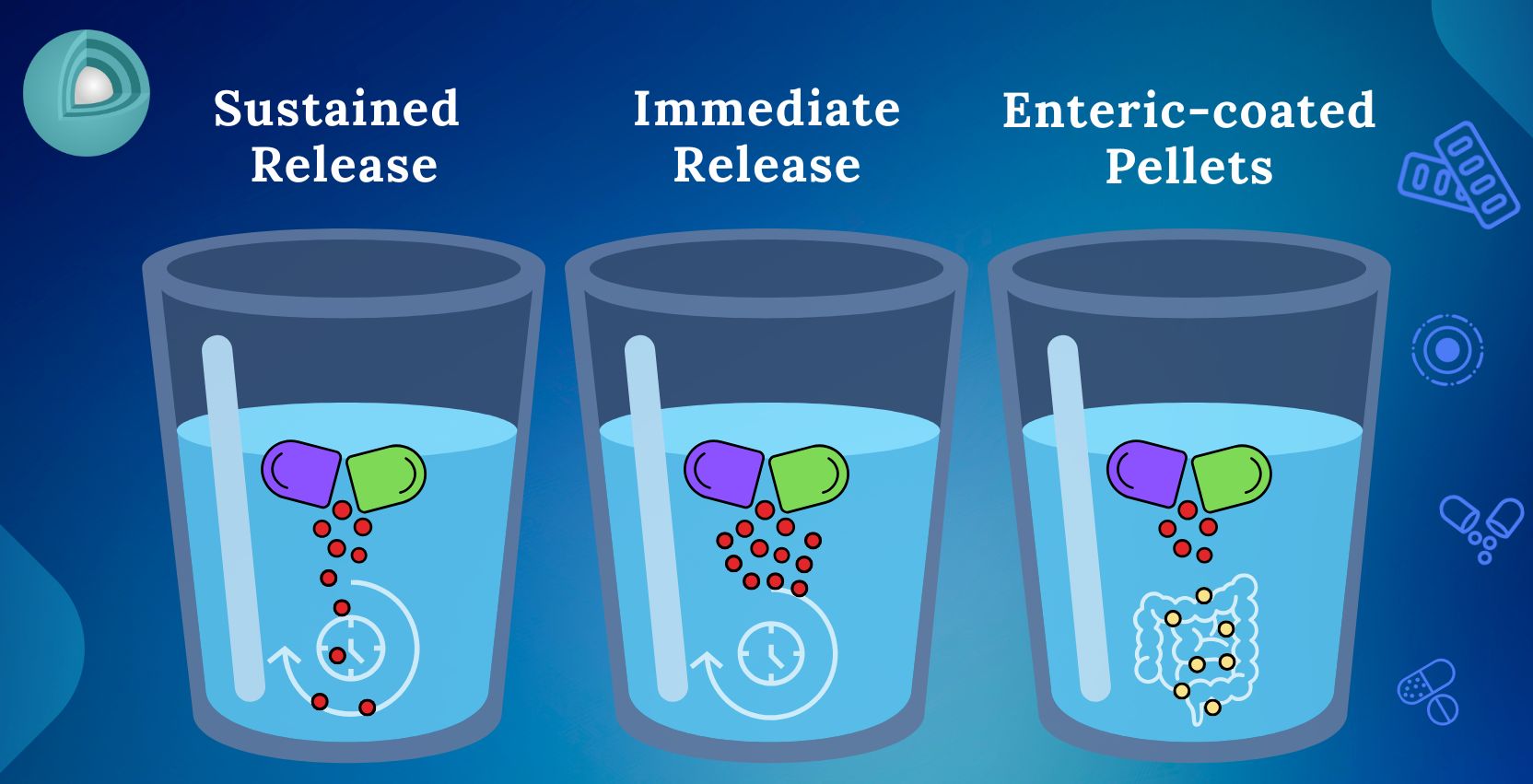
Enteric Coated Pellets: Protecting Active Ingredients from Gastric Acid
Introduction
In pharmaceutical formulations, protecting sensitive active ingredients from the acidic environment of the stomach is critical for ensuring therapeutic efficacy. Enteric-coated pellets serve this purpose by providing a specialized coating that allows the active ingredients to bypass gastric acid degradation and be released at the optimal site of absorption within the intestines.
What Are Enteric-Coated Pellets?
Enteric-coated pellets are tiny, spherical particles of drugs coated with a special coating material, that Protects active ingredient from gastric acid. The coating is designed to withstand the highly acidic environment of the stomach (with a pH of 1.5 to 3.5), but it breaks down in the more neutral pH of the intestines (about 6 to 7.5). This means the drugs is protected while passing through the stomach and is only released in the intestines, where it can be absorbed without damage.
Why Is This Important?
Many pharmaceutical compounds are susceptible to degradation in the presence of stomach acid, resulting in reduced bioavailability or compromised therapeutic outcomes. Drugs like proton pump inhibitors, certain antibiotics, and NSAIDs rely on enteric coatings to protect them from the acidic gastric environment. By ensuring these medications are released in the intestines, enteric-coated pellets enhance bioavailability and maintain the integrity of the drug throughout the digestive process.
How Do Enteric Coatings Work?
The key to enteric coatings is their pH-sensitive polymers. These are special materials that remain solid in acidic environments but dissolve when they encounter higher pH levels of the intestines. Popular materials used include cellulose acetate phthalate (CAP) and methacrylic acid copolymers, which are safe for consumption and effective at protecting drugs.
The coating is applied layer by layer to the drug particles, creating enteric-coated pellets. These pellets can then be placed into capsules or compressed into tablets. The tiny size of the pellets helps ensure even distribution of the drug throughout the digestive system, and the enterprises ensure that the active ingredient only gets released where it’s needed.
Benefits of Enteric-Coated Pellets
1. Protection from Stomach Acid: The primary benefit of enteric coating is to safeguard the active ingredient from being destroyed or deactivated by stomach acid.
2. Controlled Release: Enteric-coated pellets can be designed to release the drug over time, allowing for extended or controlled delivery, which can be particularly beneficial for treatments that need sustained release.
3. Improved Tolerability: Drugs that can irritate the stomach lining—like aspirin—are much easier to tolerate when enteric-coated. They bypass the stomach, reducing the chance of side effects like stomach pain or ulcers.
Applications in Medicine
Enteric coatings are widely used in pharmaceuticals and nutritional supplements. Medications for gastroesophageal reflux disease (GERD), non-steroidal anti-inflammatory drugs (NSAIDs), and enzymes like pancreatic enzymes often rely on enteric coatings to ensure the medication reaches the small intestine intact. It's also used in probiotics and some vitamins that are sensitive to stomach acid, ensuring their survival through the digestive process.
Conclusion
Enteric-coated pellets are a clever and essential technology in modern medicine. They protect active ingredients from the stomach’s harsh acidity and ensure the medication reaches the part of the body where it can work effectively.
At Umang Global Group Pvt Ltd, we pride ourselves on producing premium, high-quality enteric-coated pellets. Our products are manufactured under stringent conditions and meet all regulatory standards to guarantee safety and efficacy. Whether you need bulk pellets, customized formulations, or small orders, we have the solution for you. For more information, feel free to contact us today!
References
Troy, D. B., et al. Remington: The Science and Practice of Pharmacy, Volume 1. Lippincott Williams & Wilkins, 2006.
Maderuelo, Cristina, et al. "Enteric coating of oral solid dosage forms as a tool to improve drug bioavailability." Eur. J. Pharm. Sci., vol. 138:105019., 1 Oct. 2019, doi:10.1016/j.ejps.2019.105019.







